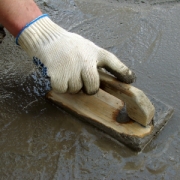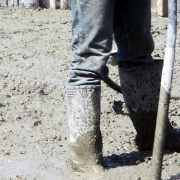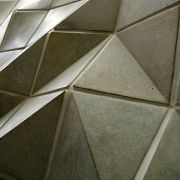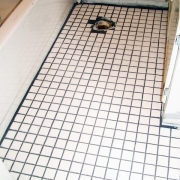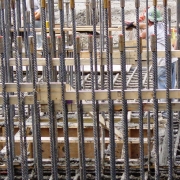- Error
{Re}habitat
Learn how adaptive reuse and upcycling can add hip design to your home, apartment, or yard with the Go Green channel's {Re}habitat series. Follow host Rachael Ranney as she shows you how to repurpose salvaged and found materials, adding fun and function to your space without breaking your budget.

This topic includes information related to concrete topping used during construction. Concrete topping is used over existing concrete slabs to level, reinforce floors and fill surface deformations. Cellular concrete is a lightweight, aerated concrete.
Cast Underlayment, often referred to generically as “gypcrete,” Maxxon Corp’s registered trademark name, has been used for the leveling of rough and uneven floors, for wood floor systems requiring fire ratings and acoustic control, and as the encapsulation material for in-floor radiant heating. The increased material strengths available today, along with ever-increasing competition, have led to the manufacture of more durable products and an increased use of cast underlayments since the 1990s. The application of cement underlayment is similar to traditional techniques for casting concrete. Cement underlayment (non-structural) can be added over existing concrete or timber floors, both interior and exterior, provided that the substrate is structurally sound.
Grout is a strong cementitious mix or chemically-setting mix used for filling voids, joints, or cracks in concrete or masonry. There are two main categories of grout: cementitious grout and chemical grout. Cementitious grout has been used in the U.S. since the mid-1800's to create grouted reinforced masonry. This construction is normally used on buildings limited to a few stories. Cementitious grout is also used for embedding reinforcing bars, which increases the amount of load-bearing material in a masonry wall; for filling hollow metal door frames; for repairing cracks; and for connecting pre-cast concrete panels. Chemical grouts are fluid and are used for filling under the bearing plates of columns and machine bases or for injection to fill cracks. Grouts used for tiling, flooring, resin grout, flowable fill, stone restoration, and foundation and slab jacking are examples of more specialized grouts.
This topic includes information related to non-shrink grout used during construction. A hydraulic cement, non-shrink grout, is commonly used as a setting bed between structural members. The components of a non-shrink grout prevent loss of material volume or shrinkage, making it suitable for structural grouting.
This topic includes information related to epoxy grouting used during construction. Epoxy grout is a stable volume grout used between ceramic, porcelain and quarry tile. The material is impervious to water, stains and chemical reactions.
This topic includes information related to concrete cutting performed during construction. Concrete cutting is the action of cutting or sawing a cured concrete form with a powered concrete saw. Powered concrete saws use gasoline, hydraulic, pneumatic or electrical motors. Powered concrete saw types include: flat, track mounted, wire, hand or chain.
This topic includes information related to concrete boring performed during construction. Concrete boring is the action of boring or drilling a cured concrete form with a powered concrete auger or drill. Holes in concrete slabs, walls or floors are often required for the passage of electrical, plumbing and HVAC equipment.
Reinforcing Steel (Rebar) embedded in concrete provides the necessary resistance to stresses which arise from flexing and bending, allowing reinforced concrete to be used in many applications in the construction industry. Concrete has excellent compressive strength, but it is weak in tension. Reinforcing steel has excellent tensile strength but must be held in place to be effective. Thus, steel reinforced concrete provides a strong structural material or composite that can be aesthetically pleasing, economical, reliable, and durable. Fabricated from carbon steels with high yield strengths, the rebar is also ductile. The coefficients of thermal expansion of concrete and carbon steel are similar, so that internal stresses due to expansion and contraction are minimized. The concrete bonds strongly to the surface of the steel so that stresses are transferred efficiently from the concrete to the rebar. This composite is now widely used for the construction of concrete slabs, concrete walls, concrete beams, concrete columns, elevated concrete floors, and concrete footings and foundations. In the concrete, the rebar is contained in an alkaline environment and a passive film of iron oxide is formed, protecting the steel from corrosion. However, this protection is lost if the concrete structure is exposed to seawater or deicing salts. In these conditions, galvanized (zinc-coated) or epoxy-coated rebar must be used to realize the expected durability for the reinforced concrete.
